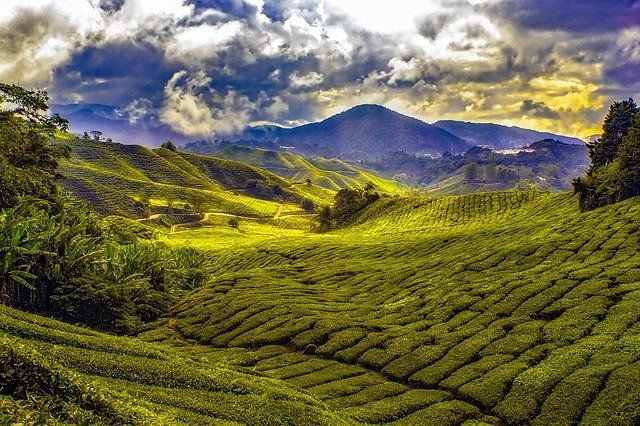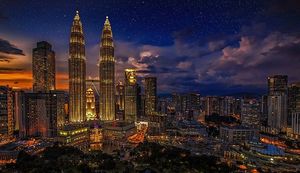Area: 127,300 miles
Territories: Malaysia consists of eleven states and Kuala Lumpur, on the Malay Peninsula; and Sabah and Sarawak, in northern Borneo. It is governed by a constitutional monarchy.
Environment: Four hundred miles of sea separate Malaysia into roughly two halves; its peninsula and the larger islands. With a hot, humid climate, much is covered with rain forest.
Population: 22 million — Malay 54% and increasing; Chinese 26% and decreasing; Indian 10%; tribal peoples 9%; others 1%. More than three-quarters live in Peninsular Malaysia, and 1.5 million near Kuala Lumpur, the capital. Other centres are Johor Bahru and Penang. Most Chinese and Indians dwell in urban areas.

Economy: Rapid economic growth has occurred. There have also been many illegal immigrants. The main exports are rice, tin, palm oil, hardwood, cocoa, tea, pepper, rubber and computer chips. Tourism is important. Recently, Malaysia has been experiencing severe economic difficulties, as with other ‘tiger’ economies.
Languages: Malay (official), Chinese, Tamil, English and tribal languages.
Literacy: 73%.
Religions: Muslim 55%; Buddhist 7%; Chinese religions 18%; Hindu 6%; non religious/other 3.1%; Animist 2.4%; Roman Catholic 3.5%; Protestant 5% (over half of whom are professing evangelicals). Islam is the state religion.
Protestant denominations: Evangelical Church of Borneo; Methodist; Anglican; Basel Christian Church; Brethren; Lutheran; Pentecostal groups; many others.
History: Occupied by the Japanese during the Second World War, Malaya was liberated in 1945 and achieved independence from Great Britain in 1957. Malaysia was formed as a federation in 1963; Singapore left it in 1965. Tensions have long continued between the politically dominant Muslim Malay community and the economically dominant Chinese community. There has also been widely reported conflict between government and opposition.




